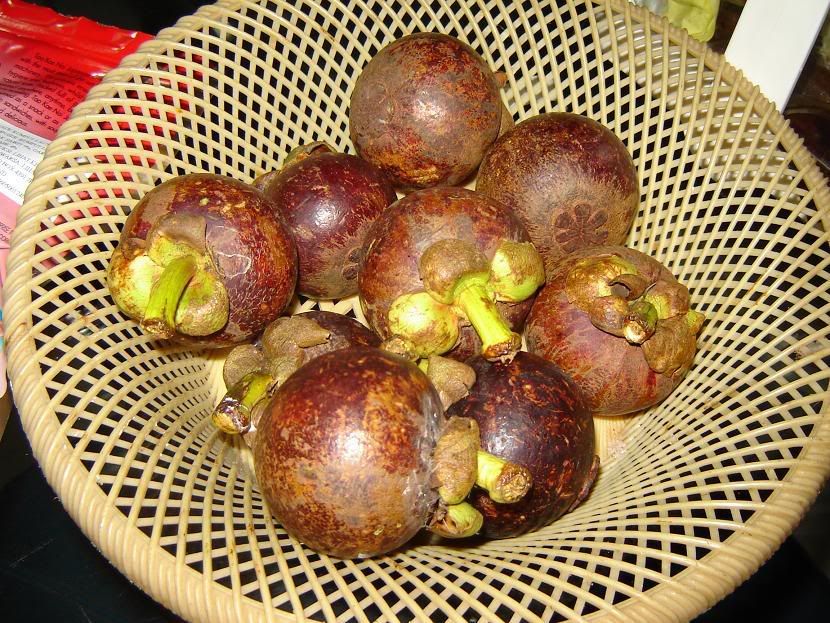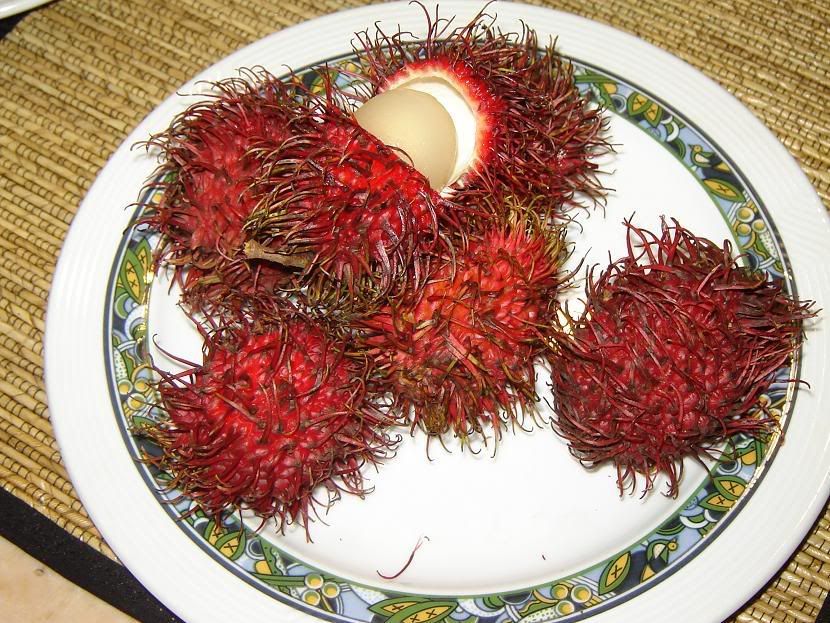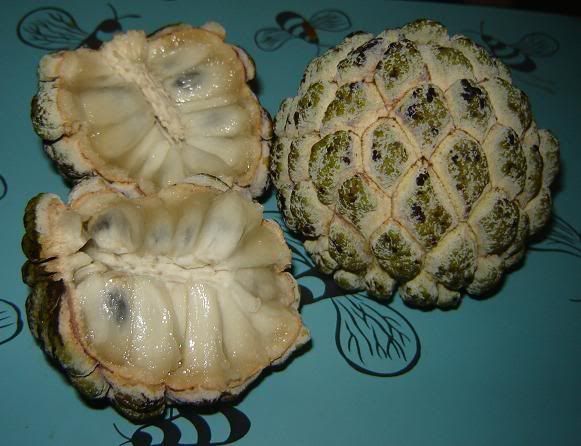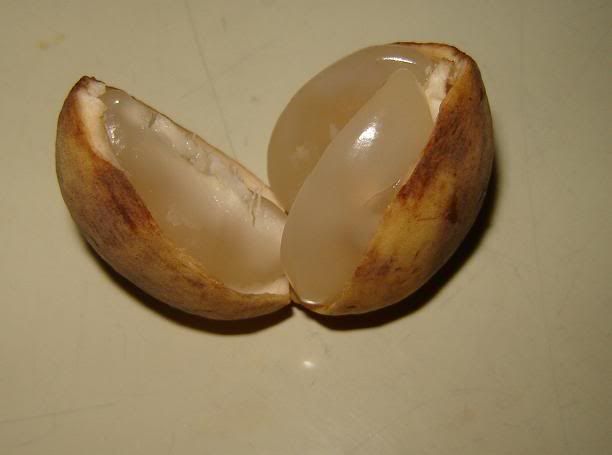Indonesian Fruits 101
Manggis (mangosteen) I'm sure a lot of you are already familiar with this recently-famous fruit that's supposed to be so high in antioxidants and are sold in the LA area for $10.99/pound or so ...
I'm sure a lot of you are already familiar with this recently-famous fruit that's supposed to be so high in antioxidants and are sold in the LA area for $10.99/pound or so ...
I ate tons of these while in Indonesia. What's left in this basket are only half of the original batch. And oh yes manggis have become expensive lately in Indonesia ... they're like about $3.5/kg now (about $1.80/pound). So feel free to eat 10 times more mangosteens than you would in LA. Not to mention they taste a looot better in this part of the world.
Rambutan I really don't know what this is called in English. Probably the same? "Rambut" means "hair" in Indonesian, I'm sure you can see why this fruit is called that. When it's just right, the inside is oh so juicy and sweet (the juice may very well drip on your fingers as you're eating). Be careful biting it, as the outer part of the seed sometimes get stuck to the meat, and it isn't that pleasant to eat.
I really don't know what this is called in English. Probably the same? "Rambut" means "hair" in Indonesian, I'm sure you can see why this fruit is called that. When it's just right, the inside is oh so juicy and sweet (the juice may very well drip on your fingers as you're eating). Be careful biting it, as the outer part of the seed sometimes get stuck to the meat, and it isn't that pleasant to eat.
Srikaya Again, don't know the english name, but the Latin is Annona squamosa. This fruit has lots and lots of seeds. Each white segment has its own seed. You can tell about how many will be in it from the bums on the skin outside. My cousin is too lazy to eat this because you have to continuously spit out the seeds. Fleshy and fibrous consistency. When it's ripe, the whole fruit is very tender. You can open the fruit by just gently pulling it apart.
Again, don't know the english name, but the Latin is Annona squamosa. This fruit has lots and lots of seeds. Each white segment has its own seed. You can tell about how many will be in it from the bums on the skin outside. My cousin is too lazy to eat this because you have to continuously spit out the seeds. Fleshy and fibrous consistency. When it's ripe, the whole fruit is very tender. You can open the fruit by just gently pulling it apart.
Duku (langsat, lonsones, longkong) This fruit has a tougher outer layer, although the flesh is actually tender and sweet (although can be sour when not ripe), easy to bite. Luckily unlike srikaya it won't splatter if you drop it on the ground. Again, each segment has a seed.
This fruit has a tougher outer layer, although the flesh is actually tender and sweet (although can be sour when not ripe), easy to bite. Luckily unlike srikaya it won't splatter if you drop it on the ground. Again, each segment has a seed.





0 comments:
Post a Comment